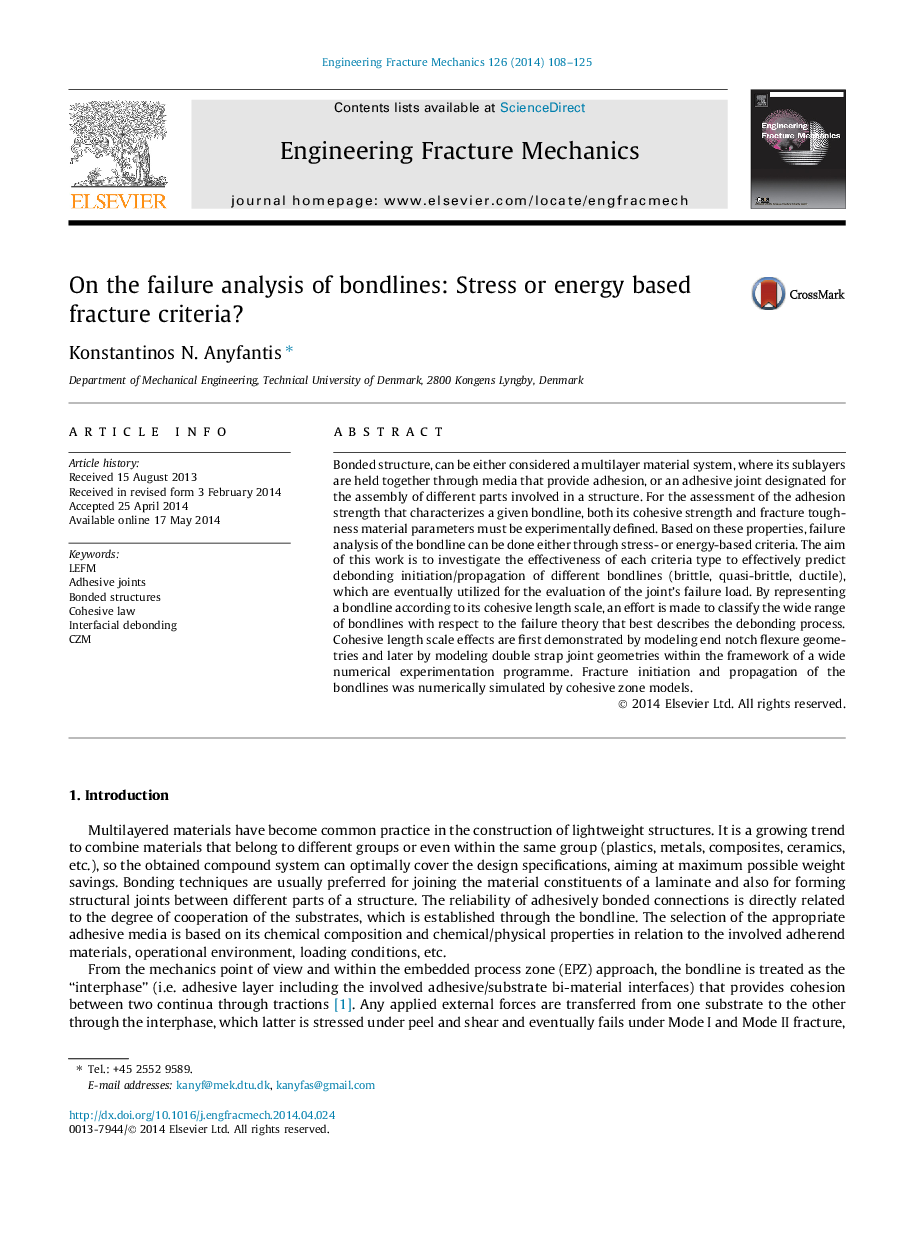| Article ID | Journal | Published Year | Pages | File Type |
|---|---|---|---|---|
| 770290 | Engineering Fracture Mechanics | 2014 | 18 Pages |
•Cohesive length scale effects on the failure process of bondlines are investigated.•End notch flexure geometries and double strap joints have been considered.•Brittle bondlines have low cohesive length scales where energy controls fracture.•Ductile bondlines have high cohesive length scales where stress controls fracture.•Fracture in quasi-brittle bondlines is controlled by a well-defined cohesive law.
Bonded structure, can be either considered a multilayer material system, where its sublayers are held together through media that provide adhesion, or an adhesive joint designated for the assembly of different parts involved in a structure. For the assessment of the adhesion strength that characterizes a given bondline, both its cohesive strength and fracture toughness material parameters must be experimentally defined. Based on these properties, failure analysis of the bondline can be done either through stress- or energy-based criteria. The aim of this work is to investigate the effectiveness of each criteria type to effectively predict debonding initiation/propagation of different bondlines (brittle, quasi-brittle, ductile), which are eventually utilized for the evaluation of the joint’s failure load. By representing a bondline according to its cohesive length scale, an effort is made to classify the wide range of bondlines with respect to the failure theory that best describes the debonding process. Cohesive length scale effects are first demonstrated by modeling end notch flexure geometries and later by modeling double strap joint geometries within the framework of a wide numerical experimentation programme. Fracture initiation and propagation of the bondlines was numerically simulated by cohesive zone models.
